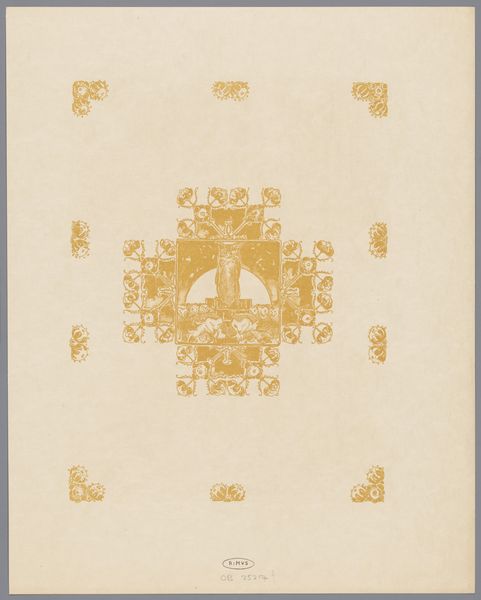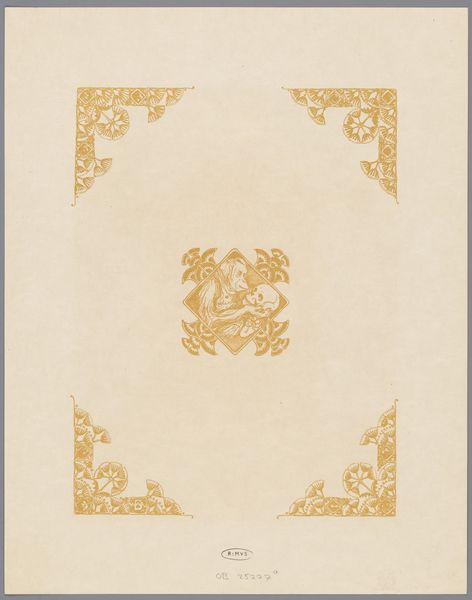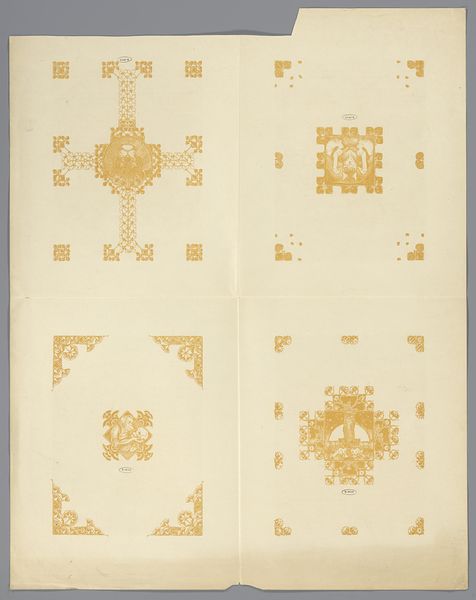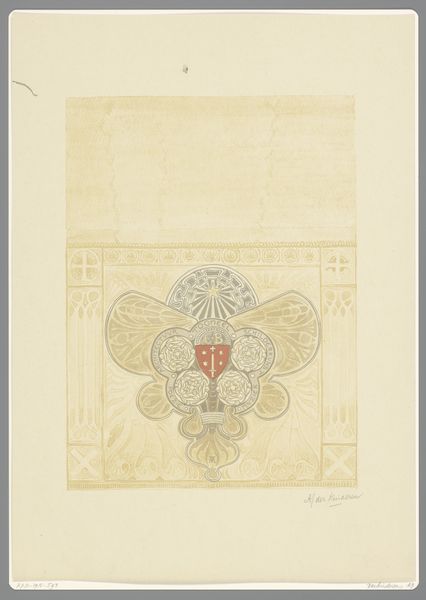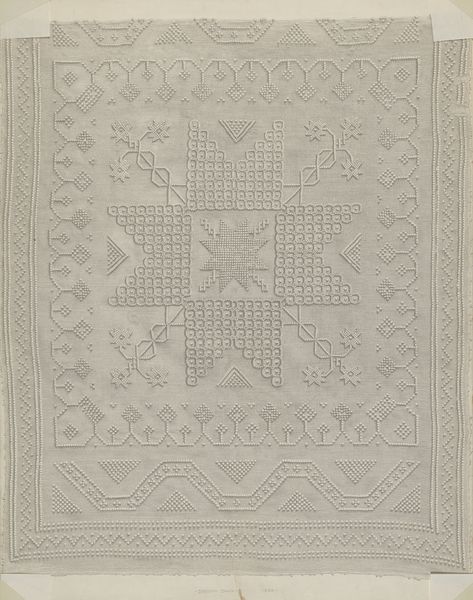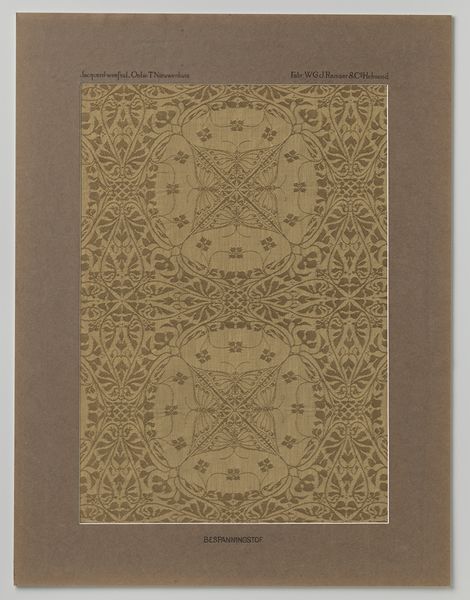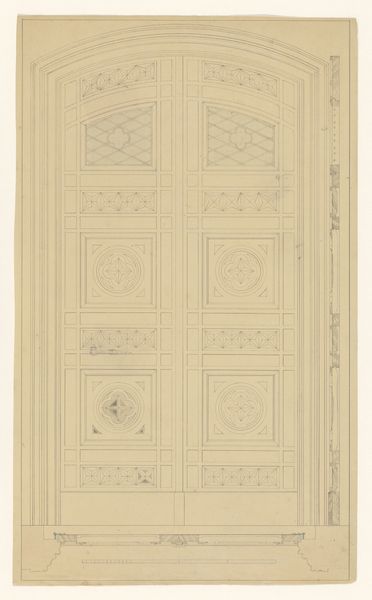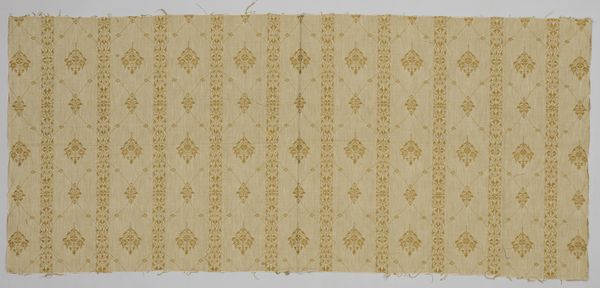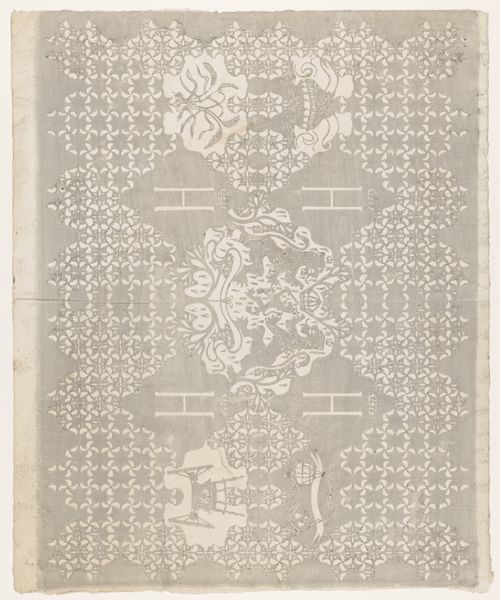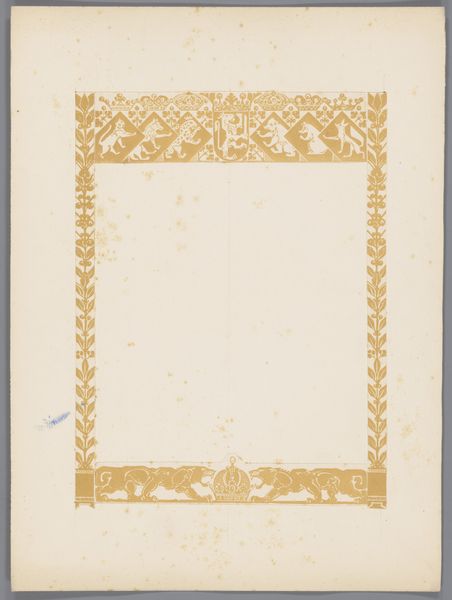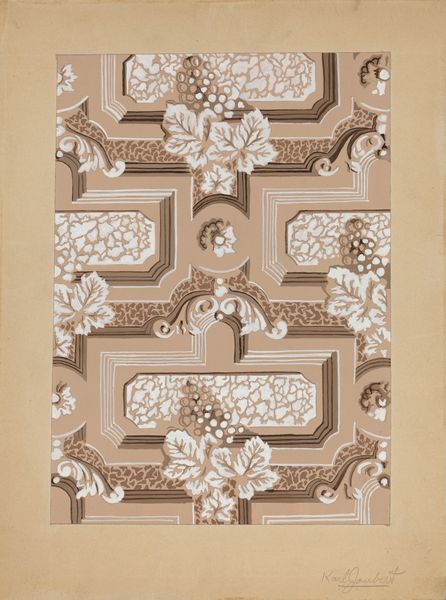
drawing, print
#
photo of handprinted image
#
drawing
#
art-nouveau
# print
#
pattern
#
organic pattern
#
geometric
#
repetition of pattern
#
pattern repetition
Dimensions: height 331 mm, width 261 mm
Copyright: Rijks Museum: Open Domain
Curator: Standing before us is a print from 1910, titled "Ornamentiek en gekroonde leeuw (Nobel)," crafted by Bernard Willem Wierink and held here at the Rijksmuseum. It features ornamental designs and a crowned lion. What strikes you most about it? Editor: Its quiet opulence, the subtle yellow on off-white makes it very pleasant. The repeating pattern feels somehow restrained, yet rich. I’m drawn to the craftsmanship, it begs the question of how it was made. Curator: It’s an excellent example of Art Nouveau's embrace of decorative arts, challenging hierarchies between "high art" and design for everyday life. Consider the social context—early 20th century Netherlands, a rising middle class eager to display wealth and status. How might that connect with the regal crowned lion motif? Editor: Absolutely. We should think about printmaking itself here; its accessibility allowed for mass production of designs like this, which catered directly to that burgeoning consumer culture. Who had access to this technology? Who labored to make these images? That context matters as much as the aesthetic choices. Curator: Wierink was very engaged with the socialist ideals prominent in his time. Could this imagery, with its historical references to heraldry and monarchy, have multiple meanings in a rapidly changing society with growing demands for social reform? Was this artist conscious of the contradictions? Editor: It is easy to interpret the meaning of something from more than a century away! Looking at its materiality and manufacture, one might examine its influence on contemporary textile design. What materials would translate such details faithfully and appealingly, and which artisans would be employed to achieve it? Curator: It certainly makes you reflect on the relationship between tradition, revolution, and artistic expression, as it evokes the complexities of social identities reflected in decorative patterns. It challenges us to recognize power and gender dynamics embedded in this artwork, and perhaps society itself. Editor: Well, reflecting on the means by which artwork comes into existence has made me think about how the smallest-scale creation is really based on society-scale infrastructures! Thank you for illuminating aspects of design I would have surely glossed over! Curator: And for me, considering the hands involved in creating it invites questions about the relationship of class to design, something too often overlooked!
Comments
No comments
Be the first to comment and join the conversation on the ultimate creative platform.
